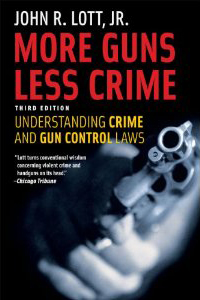 “Would Banning Firearms Reduce Murder and Suicide? A Review of International and Some Domestic Evidence” in the Harvard Journal of Law & Public Policy is creating nightmares for Bloomberg, Obama and any other anti-gun or gun control proponents. Don Kates and Gary Mauser have compiled detailed academic report that is very compelling and relatively easy to read. Click HERE for the full PDF Harvard Law report.
“Would Banning Firearms Reduce Murder and Suicide? A Review of International and Some Domestic Evidence” in the Harvard Journal of Law & Public Policy is creating nightmares for Bloomberg, Obama and any other anti-gun or gun control proponents. Don Kates and Gary Mauser have compiled detailed academic report that is very compelling and relatively easy to read. Click HERE for the full PDF Harvard Law report.
Don B. Kates (LL.B., Yale, 1966) is an American criminologist and constitutional lawyer associated with the Pacific Research Institute, San Francisco. Gary Mauser (Ph.D., University of California, Irvine, 1970) is a Canadian criminologist and university professor at Simon Fraser University, Burnaby, BC Canada.
Their study revealed several European countries with significant gun ownership, like Norway, Finland, Germany and France – had remarkably low murder rates. Contrast that with Luxembourg, “where handguns are totally banned and ownership of any kind of gun is minimal, had a murder rate nine times higher than Germany.
Their study also found no evidence to suggest that the availability of guns contributes to higher murder rates anywhere in the world.
And this follows the statistics of Australia’s Gun Ban which was a horrible backfire for crime rates http://thebullelephant.com/australias-gun-ban-horrible-backfire
 Dr. John Lott has published and spoken on this very subject since 1998. Dr. Lott, is an economist formerly employed at various academic institutions including the University of Chicago, Yale University, the Wharton School of the University of Pennsylvania, the University of Maryland, College Park, and at the American Enterprise Institute conservative think tank. He is currently a Fox News opinion contributor and holds a Ph.D. in economics from UCLA.
Dr. John Lott has published and spoken on this very subject since 1998. Dr. Lott, is an economist formerly employed at various academic institutions including the University of Chicago, Yale University, the Wharton School of the University of Pennsylvania, the University of Maryland, College Park, and at the American Enterprise Institute conservative think tank. He is currently a Fox News opinion contributor and holds a Ph.D. in economics from UCLA.
On its initial publication in 1998, Dr. Lott’s More Guns, Less Crime drew both lavish praise and heated criticism. Nearly 15 years later, it continues to play a key role in ongoing arguments over gun-control laws: despite all the attacks by gun-control advocates, no one has ever been able to refute Lott’s simple, startling conclusion that more guns mean less crime. Relying on the most rigorously comprehensive data analysis ever conducted on crime statistics and right-to-carry laws, the book directly challenges common perceptions about the relationship of guns, crime, and violence. For the most recent third edition, Lott draws on an additional ten years of data—including provocative analysis of the effects of gun bans in Chicago and Washington, D.C—bringing the book and statistics up to date and further bolsters its central contention.
With this latest report from Harvard Law, the evidence continues to mount against the anti-gun crusaders and their movement which 1) only gains momentum when some nutjob uses a Gun-Free-Zone full of unprotected citizens; a school, university, or liberal owned business as a place to demonstrate their twisted dominance, and 2) attempts to create a false sense of security and safe-haven in the minds of those who will listen/follow.
